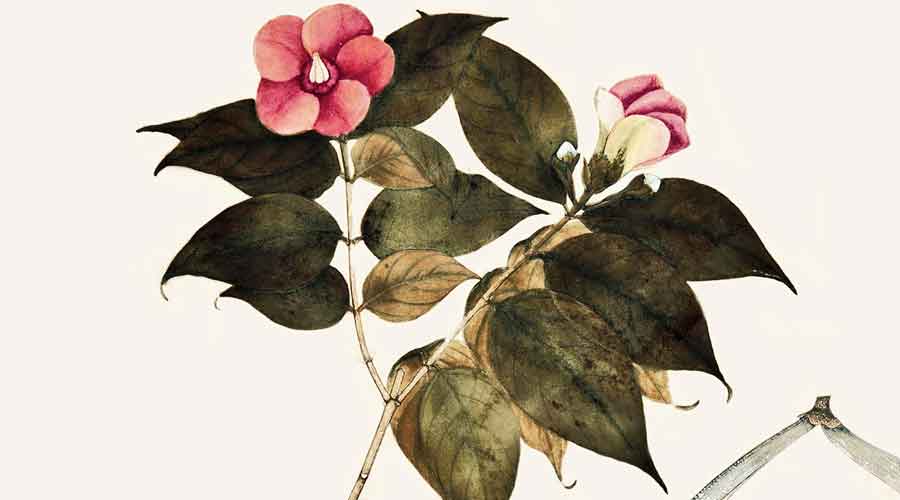During the Covid-19 pandemic, the Botanical Survey of India (BSI) was busy preparing manuscripts for the flora of India and also showcasing them on its open-access website (www.bsi.gov.in) along with the treasure trove of archival material it possesses.
On reaching “Public Informations” on the website, one clicks on “Plant Discoveries” to access the Preface and Preamble (2019-20) by Dr A.A. Mao, director, BSI.
He writes: “So far, more than 54,000 plant taxa have been recorded and identified from India which includes the flowering plants as well as the cryptogams and microbes…. The trends of taxonomic research since last decade show significant increase in interesting findings particularly pertaining to wild relatives of many economic plants viz., Musa, Gingers, Balsams, Syzygium, Palms, Begonias, fodder grasses, legumes, Orchids and Blackberries.”
He adds: “This period (2020) also witnessed an overwhelming addition of 267 plant taxa to the Indian Flora…. The hotspot regions such as Western Ghats, Himalayas and North-Eastern regions have contributed 59 per cent of the total discoveries. Maximum discoveries were made from the state of Kerala followed by Maharashtra, Tamil Nadu and Arunachal Pradesh… BSI has brought out the latest checklist of Flowering plants of India by enlisting more than 21,000 flowering taxa occurring in India under 268 families and 2,774 genera.”

Sample from the Botanical Survey of India’s collection of botanical illustrations. The Telegraph
BSI’s exclusive portal (www.bsi.archive) allows one to access its rare holdings through www.bsi.gov.in. In a decade-long exercise, more than 15,000 samples of textile designs, natural dyes and botanical illustrations and 60,000 archival documents have been digitised through photography and scanning, respectively.
Digitisation of manuscript correspondences and Watt’s Ledger (Scottish physician and botanist George Watt had compiled The Dictionary of Economic Products of India) is in progress.
Photographic digitisation of old archival documents, correspondence, manuscripts and herbarium specimens, historic textile designs and natural dyes was taken up at the Industrial Section of the Indian Museum.
Scotsman John Forbes Watson’s family business of silk trading in Europe was languishing. He visited India in the 1860s to learn traditional Indian dyeing techniques. He compiled and published the collections in 18 volumes containing 700 samples and 14 volumes (2nd series) containing 1,082 samples of Indian textiles — silk, cotton, muslin and wool — being one of the 20 sets titled Textiles Manufactures and Costumes of the People of India in 1866 and 1874.
BSI’s entire collection of 6,000 botanical paintings comprising the 2,532 Roxburgh drawings — named after William Roxburgh (1751-1815), known as the Father of Indian Botany — and the rest 3,280 done thereafter were digitised.
This is a tribute to Indian artists who painted them. Roxburgh paid them Rs 3 for a painting. A similar set of paintings exists at the Royal Botanic Gardens, Kew.
Asked why botanical paintings and the Wardle’s collection are necessary today, Dr Mao said: “The photographs of the plants do not have dissected flowers or plant parts. Some characters like hairs are not visible in photographs but may be depicted in paintings after microscopic studies. Moreover, photographs contain many unwanted elements. Many old species exist only in paintings/illustrations. For example, illustrations play a major role while describing the Hardwikia binnata in 1819 by William Roxburgh. No original herbarium specimens of this species are extant. Therefore, Roxburgh’s drawings are original reference material. These play a major role in identifying the species today.
“Botanical paintings are basic taxonomic research material. While searching the identity of unknown plants we look up literature, specimens and available illustrations/paintings. Sometimes some species are extinct in the wild — for example, Corypha taliera, a native of the Myanmar and Bengal region, was described by Roxburgh in 1820. Now we only have a painting as evidence of wild Corypha taliera.”
